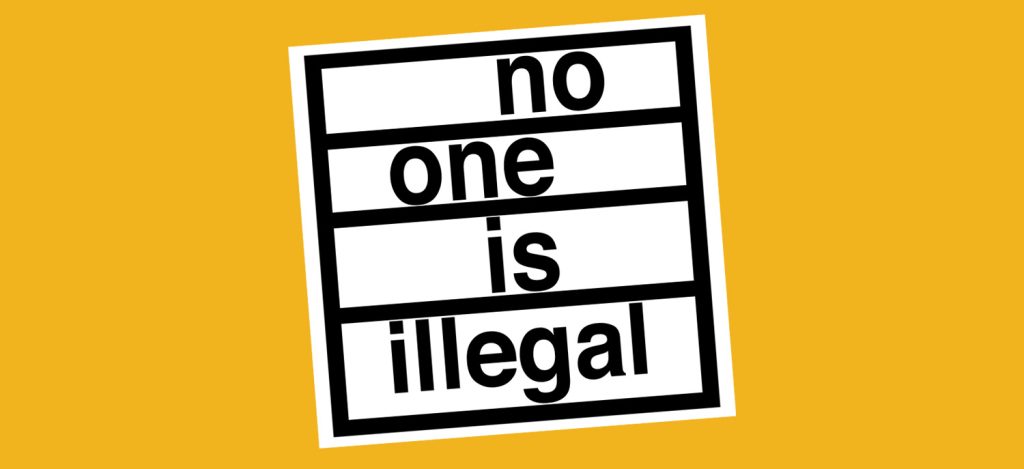
On 24 July 2024, the Home Office published regulations to amend provisions of the ‘Illegal’ Migration Act (IMA), which will allow asylum claims to be processed. These regulations will also enable people to be granted settlement and British citizenship.
Please read about the latest changes to the Illegal Migration Act in our blog here.
This blog was updated on:
- 10 October 2023 include enforcement of section 12 of the Illegal Migration Act
- 17 November 2023 to include enforcement of sections 15, 59–62 of the Act, and on Supreme Court’s judgment on the Rwanda plan
- 12 February 2024 to include publication of the Home Office’s ‘safe and legal routes’ report
- 9 May 2024 to include enforcement of Section 50, the addition of Georgia and India to the safe third country list, and information about the Rwanda Act
- 15 May 2024 to reflect the disapplication of provisions of the Act in Northern Ireland
In May of 2023, we published a deep delve into our opinion of the then Illegal Migration Bill and the potential of its passing to create wider systemic collapse. You can read this in our previous article, The so-called “Illegal” Migration Bill, so far.
Since then, unfortunately, the Bill progressed into an Act, which was enforced on 20 July 2023. This article will outline the sections that have been enforced, those that have not, and what we at Right to Remain are doing in order to brace ourselves for the legal and non-legal consequences of the Illegal Migration Act (‘IMA’) as a whole.
We’d like to start by re-affirming our well-known belief that #NoOneIsIllegal. If you believe this too, join our movement of radical solidarity.
In this blog, you will find the following information:
- Most sections of the Act have not been enforced
- Sections in force
- Period for which persons may be detained
- Seizing and retaining electronic devices
- Entry, Settlement, and Citizenship
- Procedure for Tribunal Procedure Rules
- Judges of the First-tier Tribunal and Upper Tribunal
- Inadmissibility of asylum and human rights claims
- Safe and legal routes
- Credibility of claimants
- Disapplication of provisions of the Act in Northern Ireland
- Where do we go from here?
Most sections of the Act have not been enforced
The stated purpose of the IMA is:
… to prevent and deter unlawful migration, and in particular migration by unsafe and illegal routes, by requiring the removal from the United Kingdom of certain persons who enter or arrive in the United Kingdom in breach of immigration control.
However, although the Act as whole was passed as law in July 2023, the majority of its sections — including the key sections relating to removal, detention, disapplication of modern slavery provisions, age assessments, and unaccompanied children — have not been implemented, for two reasons.
First, many of the provisions of the IMA are contingent upon the existence of (currently non-existent) agreements with ‘safe third countries’. In the Act, detention is linked to removal. Removal is linked to notices of removal to third countries. The UK Government does not have any active removal agreements with any countries (bar Albania, unfortunately), let alone ‘safe’ third countries.
In light of this, on 14 April 2022 the UK attempted to enter into an agreement with the Rwandan government to make arrangements to remove people seeking asylum who fulfilled the ‘inadmissibility’ definition (this means they had been present in or had a connection to a safe third country) to Rwanda as another ‘safe third country’ to have their asylum claim processed there instead.
The intention was that if a person’s asylum claim was accepted in Rwanda, they would be offered what the agreement between the two governments called ‘pathways to legal residence’ in Rwanda. This agreement between the UK and Rwandan governments is called the Migration and Economic Development Partnership (MEDP).
On 15 November 2023, after over a year of litigation in the courts, the Supreme Court of the United Kingdom ruled that the Rwanda policy was unlawful, and could not be enforced by the UK government. The policy will not be going ahead, and no one subjected to the Inadmissibility Rules will be sent to Rwanda. You can learn more about the implications of this victory in our Legal Update here.
Clearly, every unwilling removal is an injustice. However, when juxtaposed against the number of people who seek asylum in the UK (the current backlog of decisions yet to be made by the Home Office stands at over 170,000), this so-called ‘solution’ to the problem of irregular migration is a drop in the ocean — particularly when the fiscal and time costs of detention and removal are considered.
The second reason behind the lack of implementation is that much of what the IMA proposes turns upon the existence of regulations published by the Secretary of State for the Home Department (the Home Secretary). Regulations are a form of secondary legislation which, put simply, means that where Acts (primary legislation) outline general law, secondary legislation outlines how that law is meant to be enforced in practice; like instructions.
Section 2 is the part of the IMA upon which everything else seems to turn. It creates a duty upon the Home Secretary to remove anyone who meets the 4 removal conditions from the UK. However, it has not come into force, again due to the fact that there is nowhere to send anyone.
At the time of writing, not a single regulation has been published, and we don’t know if or when they will be. We will keep our community informed of any changes or updates via our newsletter.
The Migration Justice Project (NI) published a useful briefing, including a table that outlines the key provisions of the IMA and whether or not they have been implemented here.
For more information about the IMA, have a read of this blog published by Free Movement.
Sections in force
The following sections of the IMA have been commenced:
- Section 12 — ‘Period for which persons may be detained’
- Section 15 — ‘Seizing and retaining electronic devices’
- Sections 30–37 — ‘Entry, Settlement, and Citizenship’
- Section 50 — ‘Procedure for Tribunal Procedure Rules’
- Section 52 — ‘Judges of First-tier Tribunal and Upper Tribunal’
- Section 59 — ‘Inadmissibility of certain asylum and human rights claims’
- Sections 60–61 — ‘Safe and legal routes’
- Section 62 — ‘Credibility of claimant: concealment of information etc’
- Sections 63–69 — General provisions (including definitions, and also sets out which sections of the Act have been commenced, etc)
Period for which persons may be detained
Amidst the vast sections of the IMA that are centred upon detention and have not been enforced, Section 12 of the Act was enforced on 28 September 2023.
This section greatly increases the Home Secretary’s power to detain a person who is, or appears to be, subject to the duty to remove. This is confusing, however, because the Section 2 duty to remove remains unenforced. This goes against the well-established Hardial Singh principles which generally stipulate that the Home Secretary can only detain a person in immigration detention if there is an intention to deport the individual in question, and that they can only be detained for a reasonable period, and there needs to be reasonable diligence surrounding that detention.
By contrast, Section 12 of the IMA allows for an extra period of detention, which is further explained (but not very well) in the explanatory notes.
Limitations on the duty to detain apply to pregnant women and unaccompanied children — crucially the Home Secretary is not under a duty to detain them, but she has the discretion to.
Challenges to the duty to detain can be made on a number of grounds. For instance, using the Hardial Singh principles, or establishing human rights grounds (particularly Article 5 of the European Convention on Human Rights which concerns the right to liberty and security).
Practically speaking, it is important to note that there not enough detention staff or centres to carry this out, at least not immediately. Section 11 of the IMA (which allows for the Home Secretary to use ‘any place’ to detain someone subject to deportation) has not been enforced.
Because of the government’s Safety of Rwanda (Asylum and Immigration) Act 2024 and Treaty with Rwanda, people who fulfil requirements of removal to Rwanda have started to receive Notices of Intent for removal from the Home Office. We have seen increases in the numbers of people detained. Because Section 12 of the IMA has been enforced, those detained are subject to longer time frames in detention.
Seizing and retaining electronic devices
Section 15 of the IMA increases the search powers conferred upon immigration officers in the following way —
(a) powers to search persons liable to be detained under paragraph 16(2C) of Schedule 2 to the Immigration Act 1971 (illegal migrants), and to search vehicles, premises and property, for things on which certain information is or may be stored in electronic form;
(b) powers to seize and retain such things, and to access, copy and use information stored on those things.
This further legitimises the invasive practices of immigration enforcement teams. However, we have yet to see regulations that clarify how exactly these powers are to be exercised or legitimised on a day-to-day basis under the IMA. For instance, ‘certain information’ has not been defined, nor have the thresholds as to why or for how long such information can be ‘copied’ or ‘used’. Under data privacy laws, information cannot typically be stored indefinitely and there must be strict parameters surrounding the purposes for the storage or use of such data.
Entry, Settlement, and Citizenship
Sections 30–37 of the IMA are in force, and are intended to impact people who arrived in the UK to seek asylum (through irregular means) on or after 7 March 2023.
The expected draconian impact of these sections is as follows.
People who arrive(d) in the UK on or after 7 March 2023 through irregular means (generally, this means without leave to enter/remain, and via a third country as opposed to directly) will not be eligible to receive leave to remain in the UK (this means refugee or other immigration status) and will ultimately be ineligible for British citizenship.
A number of exceptions to these provisions exist, including a grant of limited leave to remain to survivors of modern slavery, and unaccompanied children. The rest of the exceptions to this are discretionary, meaning that the Home Secretary ‘may’ (not ‘must’) decide to grant a person leave to remain or enter in the UK.
With regard to ineligibility for British citizenship, the Home Secretary may determine that a person is not ineligible if this would contravene the UK’s human rights obligations under the European Convention of Human Rights (ECHR). We can therefore assume that submissions centred around how deprivation of British citizenship would breach a person’s ECHR rights (such as the right to life, family, freedom of assembly, etc) could be made.
We have yet to see how these provisions will operate in practice and, as above, we will keep our community notified of what we learn.
However, as with much of the IMA, these provisions turn upon the enforcement of the Section 2 removal conditions. As such, we have not heard of these provisions being imposed upon people, and we wonder if we ever will.
Procedure for Tribunal Procedure Rules
Section 50 of the IMA sets out the ‘Procedure for Tribunal Procedure Rules’, and was brought into force on 1 May 2024. This section of the act sets out the power of the Lord Chancellor to make the rules for the Tribunal Procedure.
Judges of the First-tier Tribunal and Upper Tribunal
Section 52 of the IMA allows for First-tier Tribunal judges to preside over hearings in the Upper Tribunal. This section does not make much sense without the enforcement of ‘suspensive appeals’ which are intended to subvert access to regular appeals or judicial review for those subjected to removal-dependant detention.
However, as ever, ‘suspensive appeals’ have not been enforced under the provisions of the Act, and so Section 59 remains isolated in its existence. It is important to note that the functions and roles of First-tier and Upper Tribunal judges differ significantly, so further clarification as to what this allowance means is crucial.
Inadmissibility of asylum and human rights claims
Section 59 of the IMA further enshrines the notion of ‘inadmissibility’ which was initially introduced by Priti Patel’s Home Office in January 2021 under the Inadmissibility Rules, and then codified in the Nationality and Borders Act 2022.
In short, inadmissibility is the idea that if a person claiming asylum in the UK passed through what the UK deems to be a ‘safe’ country en route to the UK, or has a ‘connection’ to such a country, the UK will attempt to shirk its responsibility in providing the person with protection by removing them to that country. To learn more about the Inadmissibility Rules in depth, have a look at our detailed Toolkit page here.
However, since the policy was introduced in 2021, the reality is that to date most people who receive Notices of Intent for inadmissibility eventually end up back in the UK asylum system to have their claims processed… because, again, the UK does not have active return agreements with ‘safe’ third countries (Rwanda included).
The way in which Section 59 (and the IMA itself) attempts to get around this issue is by referring to ‘Safe States’ listed under Schedule 2 of the IMA. This list consists of all EU and EEA member states, and Albania as countries that are safe and do not pose a risk to the life or liberty of their nationals.
In this way, nationals of these countries are not permitted to seek asylum or make human rights claims in the UK. Section 59 and other sections of the IMA reserve the option for the Home Secretary to expand this list, according to regulations.
On the 17 April 2024, Georgia and India were added to the list of countries where any protection or human rights claims will be declared automatically inadmissible. This will also affect those people from Georgia and India who have pending asylum claims (this means that they have not yet received a decision) which were made on or after 20 July 2023.
This was done through a Statutory Instrument which came into force on the 17 April 2024. However, the relevant part of the IMA (Section 59) has not yet been commenced. This means this new statutory instrument will not have any effect until Section 59 is in force.
Safe and legal routes
Section 60 of the IMA enforces a duty upon the Home Secretary to draft regulations that implement a cap on the number of people who can enter the UK to seek safety via ‘safe and legal routes’ through consultation with various representatives.
The IMA does not provide a definition of ‘safe and legal routes’ or an accompanying scheme. On this topic, Section 61 stipulates that —
(1)The Secretary of State must, before the end of the relevant period —
(a) prepare and publish a report on safe and legal routes by which persons may enter the United Kingdom, and
(b) lay the report before Parliament.
In January 2024, the Home Office published a report on ‘safe and legal routes’. We have summarised it in a separate blog which you can read here.
In short, the report does not introduce or suggest any new routes to safety in the UK, it merely lists existing routes. It does not suggest improvement to existing routes, or a realistic alternative to claiming asylum that the government would consider ‘legal’.
The consultation with local authorities took place from October 2023 to January 2024. Their responses are now being reviewed by the Home Office, which will then consider what the ‘cap’ should be on migration in 2025 and this figure will be presented to Parliament before the end of the calendar year. No regulations on safe and legal routes have been published as of February 2024.
Credibility of claimants
Section 62 of the IMA, much like Section 15, increases the search powers conferred upon immigration officers, but goes a step further to state that failure to comply with these search powers could negatively impact upon the person’s credibility in their asylum claim.
‘…failure to provide to an immigration officer or the Secretary of State, on request, any information or anything else required in order to access any information stored in electronic form on a thing in the possession of an immigration officer or the Secretary of State that —
(i) was found on the claimant, or
(ii) appears to an immigration officer or the Secretary of State to have been in the possession of the claimant.’
We can assume that ‘anything else required in order to access any information stored in electronic form’ is alluding to phone passcodes, but again, regulations have not been published to clarify this point.
These provisions make clear that vigilance around and in support for those liable to immigration detention is crucial. To learn more about how to protect and prepare in the event of detention, read our Toolkit page here.
Disapplication of provisions of the Act in Northern Ireland
On 13 May 2024, the High Court in Northern Ireland held that the IMA as a whole breaches the Windsor Framework (a legal agreement between the EU and the UK), and that certain sections of the IMA breach the European Convention on Human Rights. The case was brought by the Northern Ireland Human Rights Commission NIHRC) and an individual claimant from Iran.
You can access the full judgment here and a summary/factsheet produced by the NIHRC about the challenge here.
The provisions that were challenged (including the section 2 removal duty upon which the rest of the IMA turns) have not yet been enforced.
Where do we go from here?
Though the majority of the IMA remains dormant at this time, we recognise that the sections that have been commenced are enough to wreak havoc and create immense fear.
At Right to Remain, we are bracing ourselves for these imminent effects — through the publication of regulations, or de facto through the uncertainty that is already rippling through our communities in real time. Now more than ever is the time for radical solidarity and a unified front.
As such, some initial steps we are taking include –
- Keeping up to date with the areas we think our community is most exposed to as a result of the IMA. Namely, detention, destitution, and exploitation. We have taken steps to connect with groups that have expertise in these topics, to expand our resources and keep our community informed of the rights they have and the actions they can take.
- In the coming months, our resources on destitution/homelessness, trafficking, healthcare, and migrant workers’ rights will be expanded, improved, and disseminated widely. For instance, our Toolkit page on Detention and Reporting has recently been updated.
- Hosting and attending discussions, safe spaces, and knowledge sharing events. These will not be one-off events, but rather a continuing series where we build upon and share our increasing knowledge as time goes on.
- Keeping up to date with changes related to the IMA, understanding them, communicating them clearly and simply with our community through newsletters, blogs, articles, seminars and workshops.
As always,
Migration is life.
No one is illegal.
These walls must fall.














Discussion: